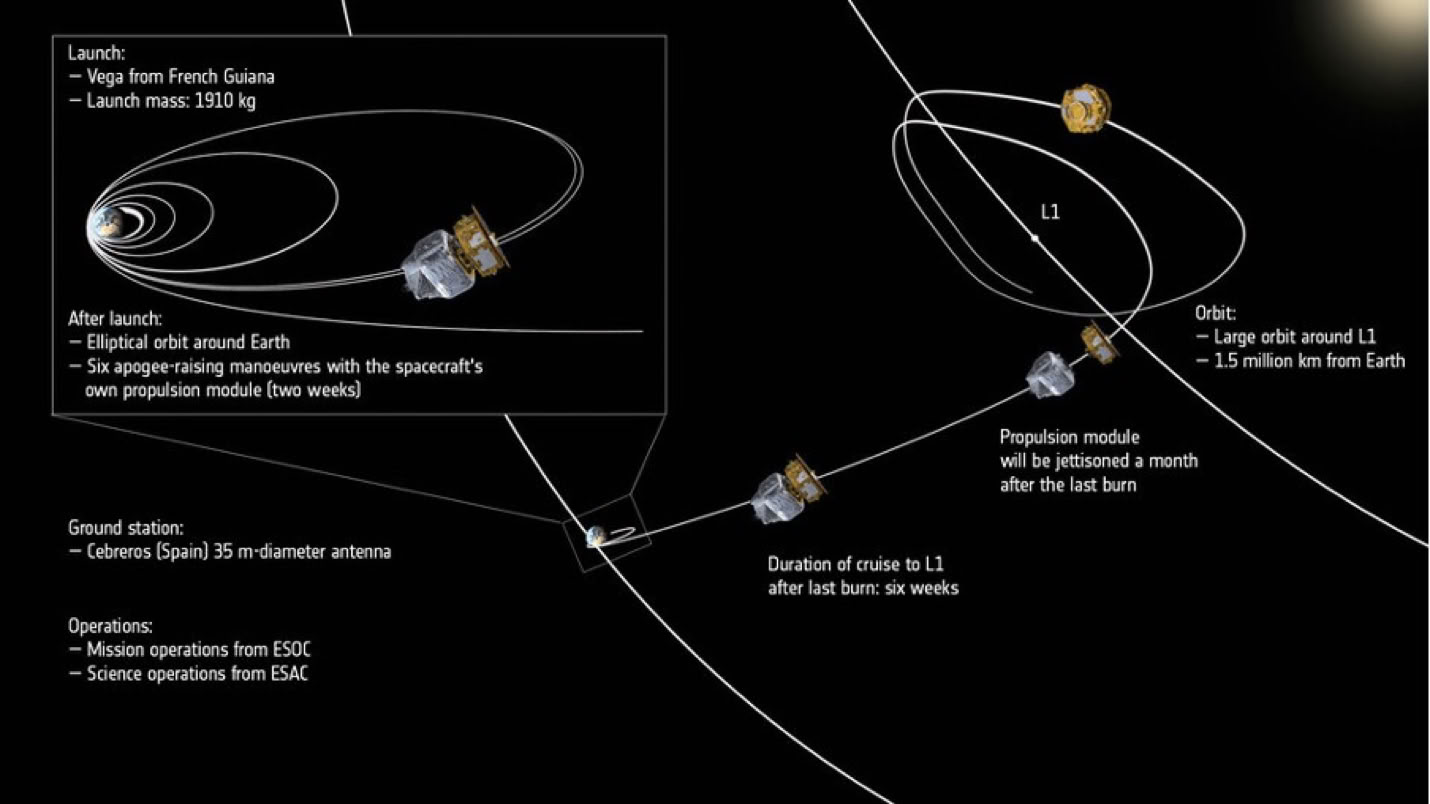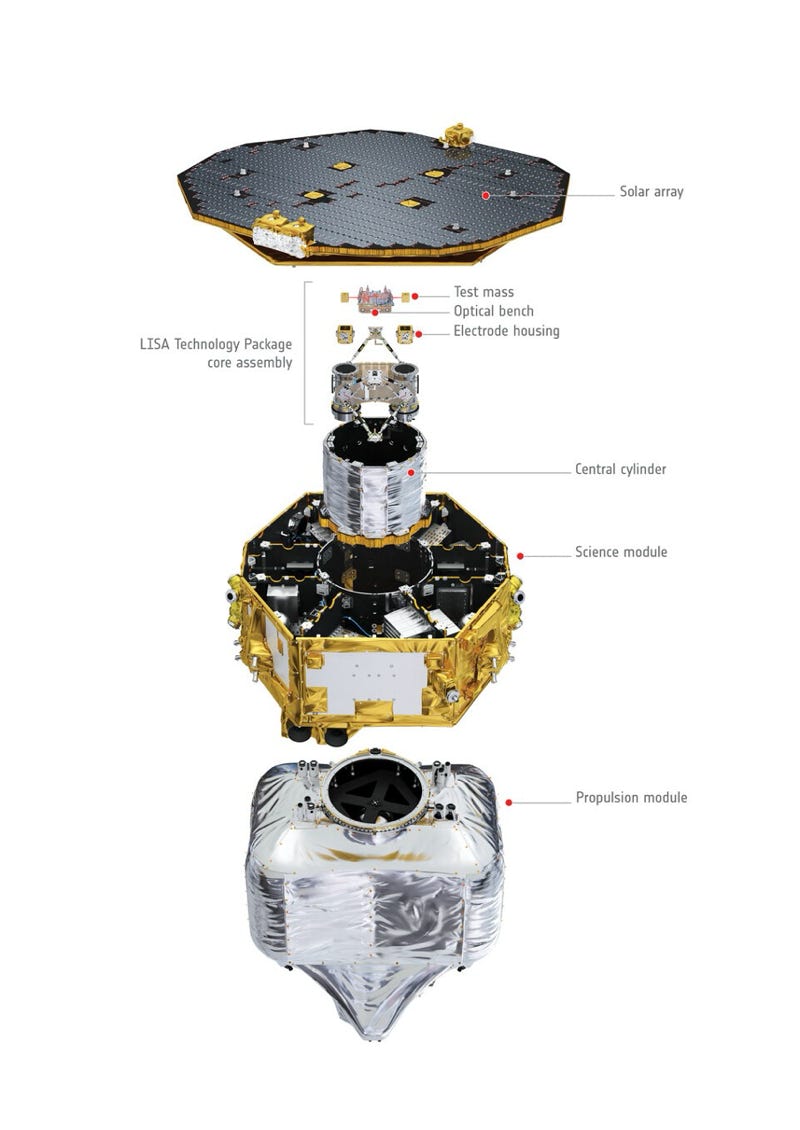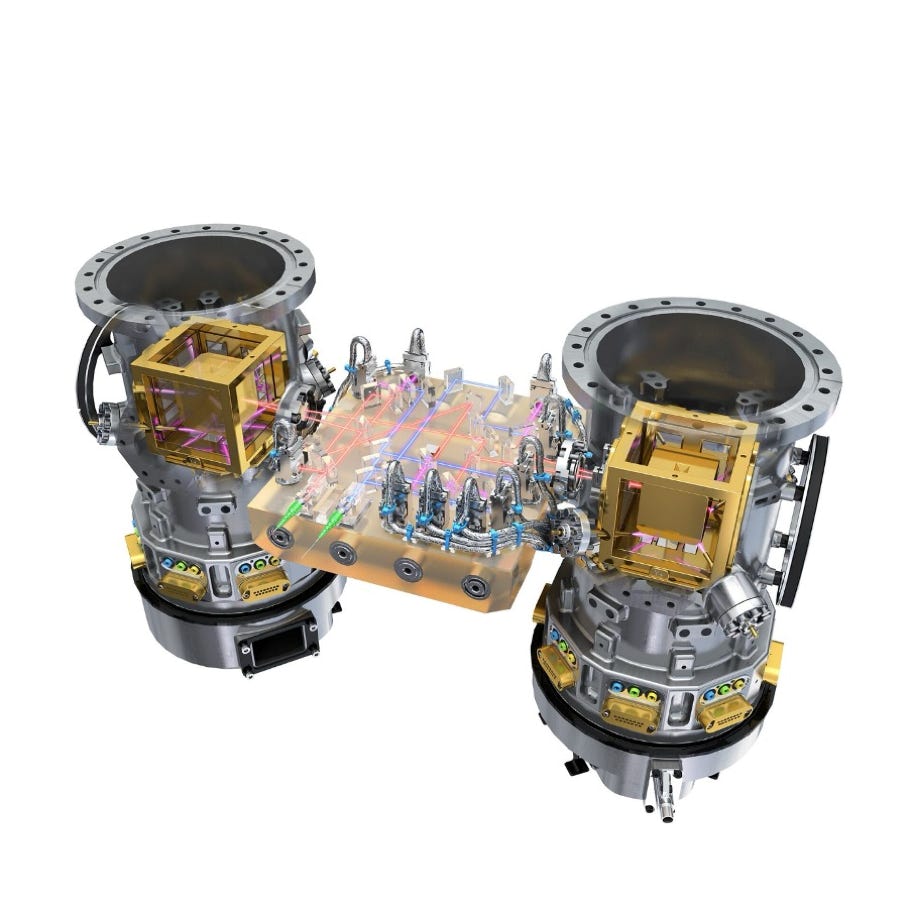by Eng. Andreea Monica Scorța
Blog
The LISA Pathfinder mission was launched as a crucial step to demonstrate and validate the advanced technologies required for the upcoming LISA mission, which aims to detect gravitational waves by measuring incredibly tiny distortions in spacetime caused by massive celestial objects. To achieve this, LISA needs instruments capable of detecting changes as minuscule as the size of an atomic nucleus.
LISA Pathfinder served as a smaller-scale prototype of one arm of the full LISA observatory. It contained two free-floating test masses inside the spacecraft, whose relative positions were monitored with extreme precision using laser interferometry based on a heterodyne Mach-Zehnder setup. Capacitive sensors measured the displacement between the test masses, and this data was fed into a control system that adjusted micro-thrusters to keep the spacecraft perfectly cantered around the masses, effectively creating a drag-free environment.
A key feature of LISA Pathfinder was its integrated spacecraft design, where the payload itself dictated the spacecraft’s attitude control, ensuring precise alignment. The mission carried two primary instruments: the LISA Technology Package (LTP), developed by European partners, which housed the test masses and acted as both mirrors for the interferometer and inertial references for the control system; and the Disturbance Reduction System (DRS), provided by ESA, which actively countered external forces such as solar radiation pressure that might disturb the spacecraft’s trajectory.
LISA Technology Package core assembly and inertial sensors
Launched on December 3, 2015, from French Guiana aboard a Vega rocket, LISA Pathfinder initially entered an elliptical parking orbit before using its propulsion system to travel to a stable halo orbit around the Sun-Earth Lagrange point L1, about 1.5 million kilometres from Earth. The mission officially began its science operations on March 1, 2016, with an initial planned duration of six months. However, due to its success, the mission was extended and continued gathering valuable data until June 30, 2017.
Overall, LISA Pathfinder’s achievements confirmed the feasibility of the drag-free technology and ultra-precise measurement techniques essential for the full LISA mission, paving the way for this future space-based gravitational wave observatory.

LISA Pathfinder's journey from launch to the L1 Sun-Earth Lagrangian point
Source: https://www.esa.int/ESA_Multimedia/Images/2015/10/LISA_Pathfinder_s_journey

